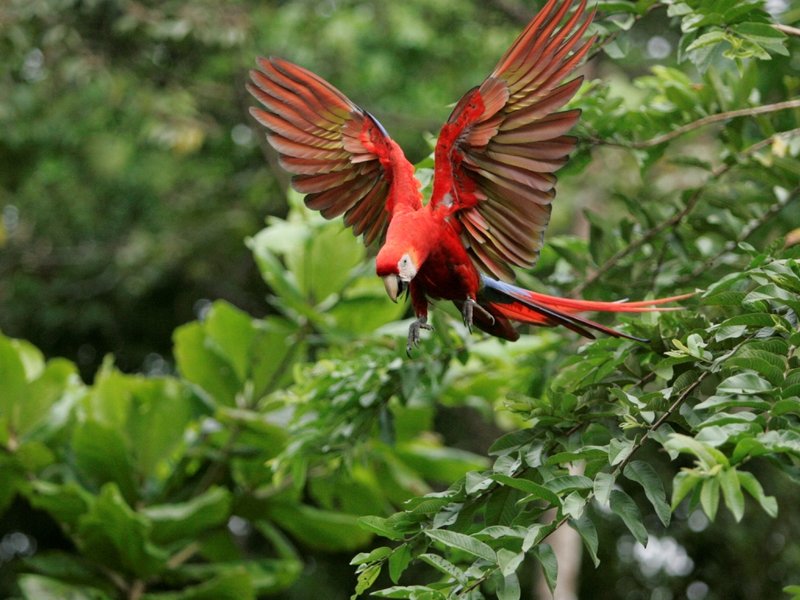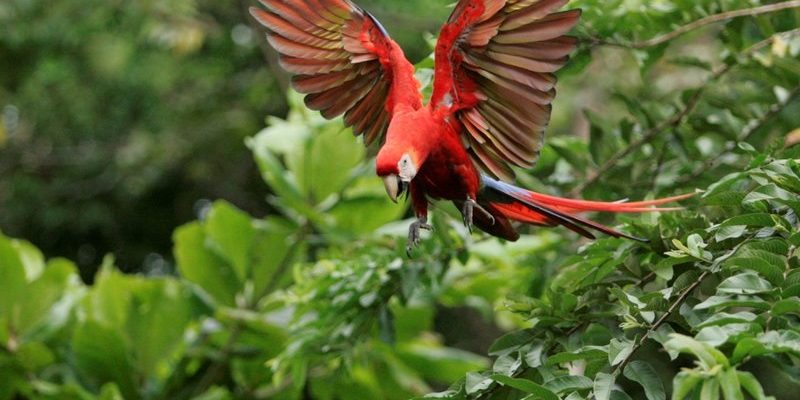
Imagine sitting around a warm campfire, sharing stories that have been passed down through generations. Often, these tales feature the scarlet macaw, not just as a feathered friend but as a powerful symbol of freedom, beauty, and even wisdom. From the jungles of the Amazon to the ancient ruins of the Maya, the presence of this striking bird weaves through cultural narratives like a colorful thread in a tapestry. Let’s explore how the scarlet macaw is celebrated in different cultures, what it represents, and why it matters so much to the communities that cherish it.
The Scarlet Macaw in Indigenous Cultures
Indigenous peoples throughout Central and South America view the scarlet macaw as more than just a bird; it’s often seen as a spiritual guide. Many tribes believe these birds embody the spirits of ancestors, helping to communicate messages from the past. For instance, the Maya civilization held the scarlet macaw in high esteem, associating it with the sun and the sky. You might be wondering, *why the sun?* Well, it’s all about the bright colors that reflect light, just like the sun does.
In rituals, scarlet macaws often symbolize *rebirth* and *creativity*. They’re included in various ceremonies, where their feathers are used as ornamentation or in paintings that adorn ceremonial sites. If you’re ever lucky enough to witness one of these events, you’ll see the joy and reverence people have for these birds. It’s like watching a dance of vibrant colors and lively spirits coming together in celebration.
Folklore is full of stories that give life to the scarlet macaw, often positioning it as a trickster or a wise guide. One popular tale involves the macaw helping a young hero on his journey. It teaches lessons about bravery, loyalty, and the importance of staying true to oneself. Honestly, these stories resonate with people. They remind us of the things that matter most in life—family, community, and respect for nature.
In many tales, the scarlet macaw also acts as a protector. Local legends describe the bird as a guardian of the forest, alerting people to danger or bad omens. This role mirrors the idea that nature can be both beautiful and fierce, reminding us to tread lightly in the places we share with wildlife.
The Macaw in Art and Expression
Art inspired by the scarlet macaw is everywhere! From pottery to weaving, this bird finds its way into various local crafts. The vibrant colors of the macaw are often mirrored in these artistic expressions, making them not just beautiful but also steeped in cultural significance. For artists, these feathers represent freedom and the beauty of nature, inspiring creativity and imagination.
Think of a colorful woven tapestry depicting a lush jungle scene, filled with scarlet macaws in flight. Each thread is not just a color; it tells a story of the land, the people, and their connection to their environment. When people create art featuring the macaw, they’re not just showcasing its beauty; they’re sharing a piece of their identity and history with the world.
Scarlet Macaws and Conservation Efforts
As much as the scarlet macaw is beloved, it faces threats from habitat loss and illegal trafficking. This brings a sobering layer to its significance in local cultures. Many communities recognize that protecting the scarlet macaw is also about preserving their heritage and the environment. When the habitat is healthy, so are the communities that depend on it.
Various conservation programs actively involve local people in the preservation of the scarlet macaw. These collaborations remind us that humans and nature are interconnected, and protecting one helps protect the other. Community-led initiatives not only safeguard the macaws but also keep cultural traditions alive, providing education about the importance of biodiversity.
The Macaw as a Symbol of Freedom and Hope
For many, the scarlet macaw represents freedom. Its soaring flight through the treetops embodies a spirit of liberation and adventure. When people see a scarlet macaw in the wild, it often evokes feelings of joy and hope, serving as a reminder that life is full of possibilities. This idea resonates deeply, especially in cultures that value communal resilience and strength.
By celebrating the scarlet macaw, local communities are also making a statement about their identity and future. They’re saying that they care about their natural world and the stories that bind them together, adding to the rich tapestry of human experience.
Learning from the Scarlet Macaw
So, what can we learn from the scarlet macaw? The way it interacts with local cultures offers profound insights into how we connect with nature, art, and each other. These birds remind us that every creature has a role in the ecosystem and in the stories we tell. Understanding their cultural significance can inspire us to appreciate the world around us more deeply.
Here’s the thing: preserving the stories, traditions, and habitats related to the scarlet macaw helps keep the narrative alive. It’s not just about saving a bird; it’s about honoring a way of life that has thrived for centuries. The scarlet macaw stands as a bridge between the past and the future, encouraging us to reflect on how we want to live in harmony with the natural world.
In conclusion, the scarlet macaw is much more than a colorful bird. It’s a vital part of local cultures and folklore, symbolizing beauty, freedom, and wisdom. By understanding and celebrating its role in these communities, we can foster a deeper appreciation for nature and the stories that connect us all. Each time we admire the flight of a macaw, we’re not just witnessing nature’s splendor—we’re also tapping into a rich narrative that spans generations.

